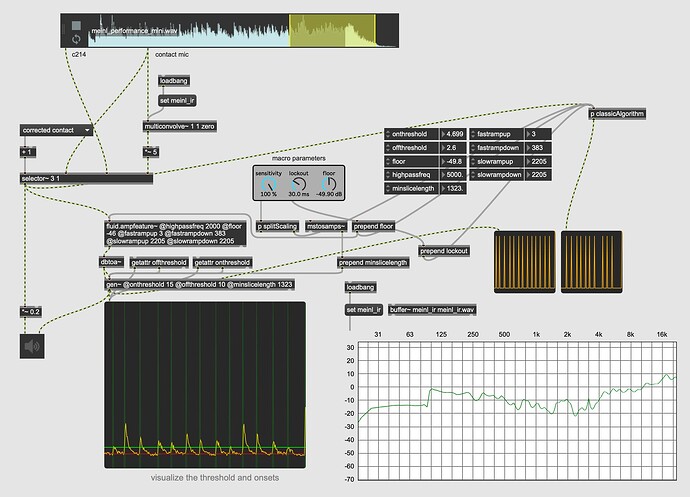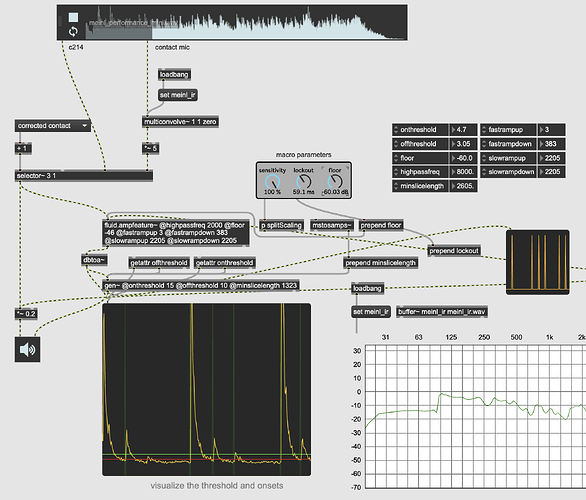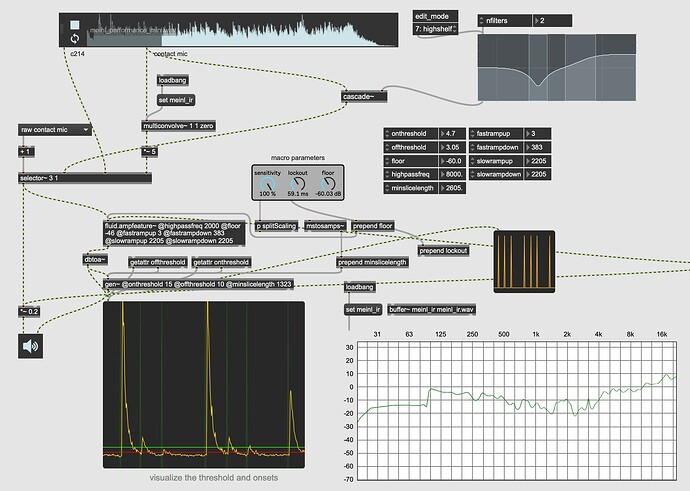So working on another hardware idea where I want to mount a contact mic on a cymbal (underneath, in the “bell” area) and use that to do onset detection, classification, etc… Basically a cymbal version of the stuff I’ve been doing with a custom sensor in SP-Tools.
I’ve experimented with a similar idea over the years and got some decent results with a hi-hat many years ago, using some HIRT to do mic correction to improve the overall sound of the hi-hat.
I’ve done the same thing now, and I have to say the sound quality is… aggressively passable on the bell. Like with the hi-hat, not going to forgo an air mic, but it’s almost usable.
BUT
The main reason I’m making this post is that I’m finding it quite tricky to optimize the onset detection for a cymbal. Even with the direct audio from a contact mic the “roar” of the ride is so much that it’s tricky to pull independent onsets out of.
I’ve gotten the best results so far using mic correction first, to apply a quite aggressive filter, but I’d like to learn/figure out some ‘best practices’ to try and do it without that. Or rather, have something that’s a bit more generalizable than making a mic correction for every cymbal, and every contact mic placement, etc…
This is the best I’ve gotten:
(you can hear the raw contact mic audio first, then the reference (a C214), then the corrected audio)
Here’s the test patch and audio too if someone wants to take a look.
contactmic_test.zip (3.6 MB)
I’ve massaged the floor some, but again, that feels very setup/cymbal-specific. I feel like there’s likely some highpass and envelope speed directions that could improve things, but I have a hard time optimizing it (this specific recipe there of up/down speeds is a @tremblap special from a few years ago!).




